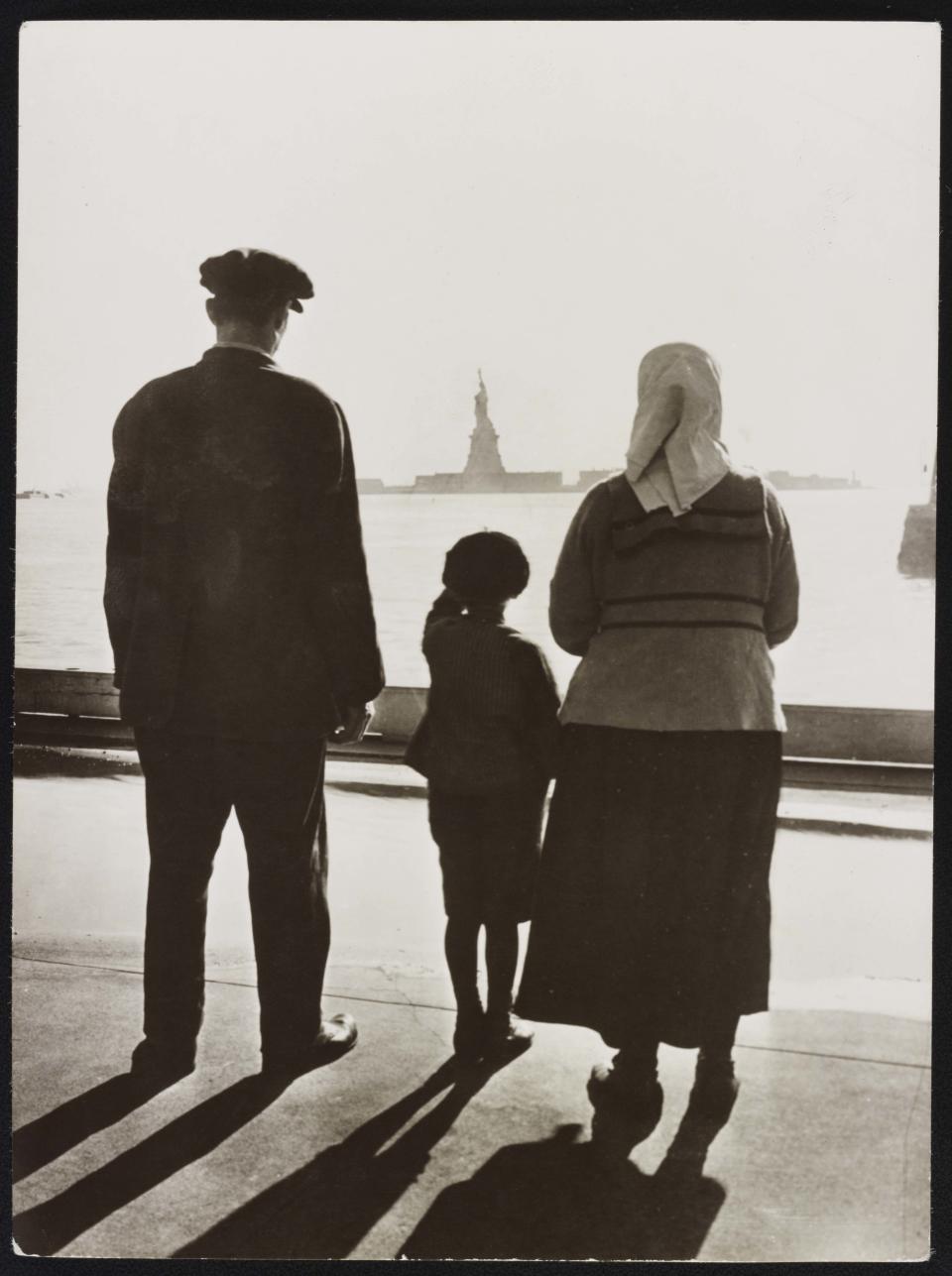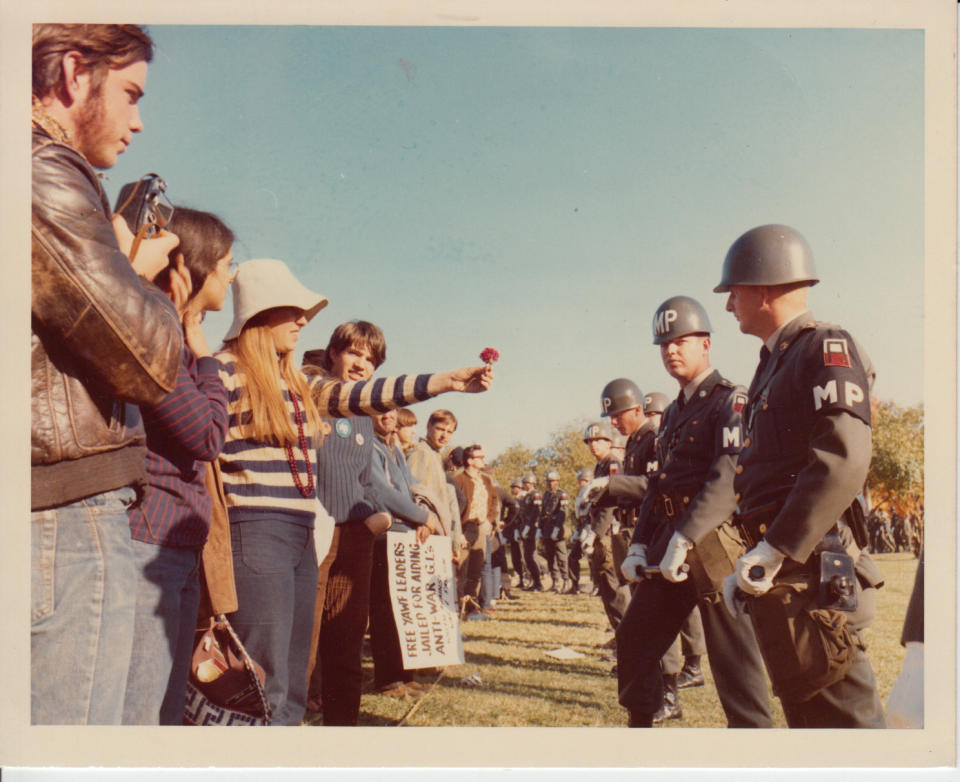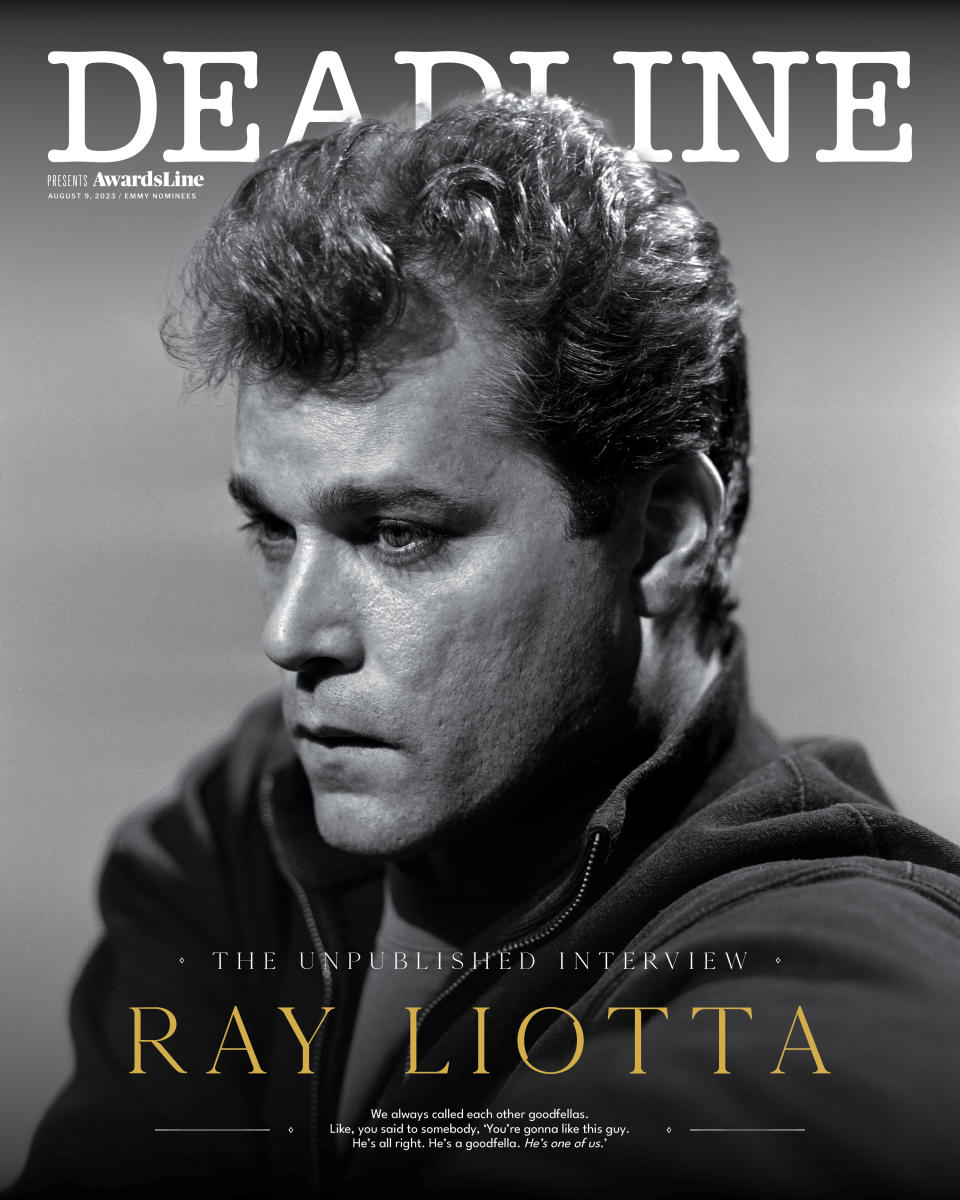Ken Burns At 70 Turns His Spotlight On ‘The U.S. And The Holocaust,’ Says “I Won’t Work On A More Important Film”
- Oops!Something went wrong.Please try again later.
- Oops!Something went wrong.Please try again later.
- Oops!Something went wrong.Please try again later.

Ken Burns lives just where you might imagine. The documentary filmmaker, who has spent a lifetime exploring American history, long ago made Walpole, New Hampshire his home, a bucolic village founded before the American Revolution. It’s dotted with old inns and quaint shops, and democracy is practiced there the old-fashioned way, through the traditional Town Meeting.
He dwells in an 1820s farmhouse ringed by rolling hills and green valleys, a place of “magnificent isolation” where he can apply uninterrupted focus to his work. On a recent summer afternoon, he ascended to the vaulted loft of a barn on his property to discuss, over Zoom, his latest series for PBS, the Emmy-nominated The U.S. and the Holocaust. “I won’t work on a more important film,” he declares.
More from Deadline
With the intellectual rigor characteristic of his canon, the series delivers a penetrating examination of the country’s tragic failure to intervene in a timely way to save millions of Jews in Europe threatened with annihilation by the Nazi regime in Germany.
“There were kind of daily revelations, hundreds of them,” Burns says of the research process for the series, “a kind of blizzard that buried you at times.”
Over a span of three episodes and six-and-a-half hours, the series investigates the political environment in the U.S. that saw FDR’s administration, Congress, and most of the American public willfully ignore the plight of Jews, and the catastrophic consequences of that inaction. In Episode 1, a narrator signals the dark national mood of the time, reading from verse by Thomas Bailey Aldrich that abhorred “a wild motley throng” of immigrants streaming into the U.S., “Men from the Volga and the Tartar steppes… bringing with them unknown gods and rites.”

The poem was published in 1892, but the anti-immigrant sentiment it articulated only increased in the first three decades of the 20th century. The tide of immigrants entering the country — 25 million from Southern and Eastern Europe between 1870 and 1914 — led to a nascent “replacement theory”, the inchoate fear that native-born Americans would be eclipsed by growing populations of Jews, Asians and other newcomers. In the early part of the century, the eugenics movement also gained traction, a racist and unscientific theory that America’s gene pool was being degraded by the newly arrived.
At the same time, leading public figures like automotive titan Henry Ford and aviator Charles Lindbergh were spreading antisemitic rhetoric. And as the Great Depression tightened its grip and unemployment skyrocketed, many Americans took a hostile view of immigrants who might become “a public charge” or nab a scarce job. It all conspired to make the country ill-disposed to welcome Jews seeking refuge from the madness that was descending on Europe.
“We knew and we did nothing,” Burns says. “We were asked to help when we even had room within the narrow confines of a pernicious immigration law to let in more than we did. And we didn’t. We let in more [Jews] than any other sovereign nation, about 225,000. But we could have let in five times that.”
The U.S. and the Holocaust contends for Emmys in three nonfiction categories — Outstanding Series, Outstanding Directing for Burns and co-directors Lynn Novick and Sarah Botstein, and Outstanding Writing for Geoffrey C. Ward. The team began work on it in 2015, the same year Donald Trump launched his first presidential campaign with an express appeal to anti-immigrant fervor. As president in 2017, he defended white supremacist marchers in Charlottesville, Virginia — who carried torches and chanted “Jews will not replace us” — by declaring there were “fine people on both sides” of the demonstrations.
Witnessing the direction of the country, Burns says he pivoted, hastening the production timetable for the series.
“I just told [the team], we’re going to accelerate the process by a year. And that’s because when we started this in 2015, it was a different country,” he explains, referencing a line attributed to Mark Twain (the subject of an earlier Burns documentary): “History doesn’t repeat itself, but it does rhyme.” In the tenor of the Trump era, he saw a distinct parallel to the time he was documenting in The U.S. and the Holocaust.
“I’m used to every film that I’ve worked on, no matter whether it was Brooklyn Bridge or Horatio’s Drive, or Vietnam or Prohibition, ‘rhyming’ — as Twain would say — with the present. And this was just getting more and more uncomfortably rhyming. Not just every other page, but every sentence. And so I just said, we just have to get it out… It was really tough on everybody, but we made it.”

Our conversation took place on the eve of an annual gathering on Burns’ property, an event he dubs “the midsummer barn bash” that doubles as a birthday celebration. This one took on special significance, as the filmmaker approached a milestone anniversary — turning 70. Guests by the hundreds were traveling from near and far.
“People are coming from LA, all across the country and then local people here, and relatives,” he tells us. “We have somebody who’s 1 — my youngest grandchild — and someone who’s 100, William Leuchtenburg, the dean of American historians.”
Gray has long since gained purchase in Burn’s chin whiskers, and crow’s feet encroach upon his hazel eyes. But at 70, he retains a startlingly boyish appearance. More important to documentary enthusiasts, he hasn’t lost any of his youthful zeal for exploring American history on film, a passion first manifested in his 20s.
More than 40 years on from the debut of his inaugural film for PBS — Brooklyn Bridge — he’s got several major projects in the works, including series on Leonard da Vinci (his first to focus on a non-American subject), the American Revolution, and another under the working title Emancipation to Exodus, about the ultimate failure of Reconstruction to remake the country into a place truly dedicated to “the idea of universal rights”, as Burns puts it. The latter project, co-directed by Burns’ daughter Sarah Burns, his son-in-law David McMahon, and Erika Dilday, isn’t expected to premiere on PBS until 2027.
“We’re already well into it,” Burns says. “It’s something I’ve wanted to do for 30 years,” since the debut of his groundbreaking series The Civil War, the nine-episode epic that transformed Burns into a major cultural figure.
But in another instance of history rhyming, as Burns and team work on Emancipation to Exodus conservative states are restricting how race in America can be broached in classrooms. The Florida Board of Education recently approved education materials that would inform middle schoolers “how slaves developed skills which, in some instances, could be applied for their personal benefit.”
None of this revisionism sits well with Burns.
“This is white supremacy trying to erase history, just as the Confederacy tried to reconfigure itself as the writer of the history rather than the losers,” he insists. “Germany, which arguably has the worst history, does the best job of teaching it. And us, who think about ourselves as so exceptional [as a nation], we can’t hear anything, we can’t see anything, we can’t say anything. If you’re exceptional, you don’t get to stay exceptional if you’ve got that attitude. That’s my feeling. Teach it all.”
During our chat, a visitor made an unannounced entrance behind Burns, the filmmaker’s dog Chester, a goldendoodle.
“He’s my executive producer,” he says of Chester. “He’s been here the last eight and a half years. This is the most active he’s ever been [during an interview]. I’ve been on live TV, on The Today Show — he’s asleep on the sofa.”
The dog seemed to register mild interest in the conversation, accepted a nuzzle on the chin from Burns, then settled quietly behind him on the couch — the same shade as his curly coat.

Chester might spend much of a typical day in search of a place to snooze, but Burns’ productivity won’t admit any indolence. After our conversation, and the pause for his birthday celebration, he would be back at it — diving deeply into complex and consequential subject matter.
“We never stop researching and we never stop writing. We shoot stuff that we don’t know whether it’s going in any script — because we don’t have the script — and we’re doing interviews that don’t have a place. We don’t say to somebody, ‘Can you get me from paragraph three to paragraph four on page seven of Episode 2?’
“Every time you see a talking head, it’s a happy accident. Then we find out where they work [within the narrative]. It attenuates the process, but at the same time, it permits us to catch up with all the scholarship and to also see it from many different angles.
“This is really hard work,” Burns says. “This is labor intensive.”
Fortunately, he adds, “I live in rural New Hampshire. I just am not distracted.”
Best of Deadline
2023 Premiere Dates For New & Returning Series On Broadcast, Cable & Streaming
SAG-AFTRA Interim Agreements: List Of Movies And Series Granted Waivers
Sign up for Deadline's Newsletter. For the latest news, follow us on Facebook, Twitter, and Instagram.

